GATE Life Sciences syllabus 2025 is categorised into three sections. Chemistry, Botany, Bio-Chemistry, Microbiology, and Zoology are some topics covered in the Life Science syllabus.
Table of Contents
GATE Life Science syllabus 2024 consists of 3 sections, out of which Section 1 (General Aptitude) and Section 2 (XL-P) are compulsory for all the GATE Life Science exam applicants. Section 3 consists of 5 subjects (Q to U) and any two subjects have to be selected by the candidate out of these five.
GATE Life Science Syllabus 2024 PDF Download
To know more about the GATE Life Sciences syllabus 2024, we have provided you with the downloadable PDF file in the table below:
| GATE Life Science Syllabus 2024 | Click Here |
GATE Life Sciences Syllabus 2024 Section-wise
The following is the section-wise syllabus for the GATE 2025 exam Life Sciences (XL). For more details, check the GATE Syllabus here.
- Section One - General Aptitude
- Section Two - Chemistry (Subject code P)
- Section Three -
- Biochemistry (XL-Q)
- Botany (XL-R)
- Microbiology (XL-S)
- Zoology (XL-T)
- Food Technology (XL-U)
Read More: GATE Admit Card 2024
GATE Life Sciences Chemistry (XL-P) Syllabus 2024
Chemistry is mandatory for all candidates. Make sure to prepare thoroughly for this subject. Given below are the topics to be covered for the GATE chemical science syllabus.
Section 1: Atomic Structure and Periodicity
- Planck’s Quantum Theory
- Wave-particle Duality
- Uncertainty Principle
- Quantum Mechanical Model of Hydrogen Atom
- Electronic Configuration of Atoms And Ions
- Periodic Table A=and Periodic Properties
- Ionization Energy
- Electron Affinity
- Electronegativity
- Atomic Size
Section 2: Structure and Bonding
- Ionic and Covalent Bonding
- Mo and Vb Approaches for Diatomic Molecules
- Vsepr Theory and Shape of Molecules
- Hybridization
- Resonance
- Dipole Moment
- Structure Parameters
- Bond Length
- Bond Angle
- Bond Energy
- Hydrogen Bonding
- Van Der Waals Interactions
- Ionic Solids, Ionic Radii and Lattice Energy (Born‐Haber Cycle)
- HSAB Principle
Section 3: s, p and d Block Elements
- Oxides, Halides and Hydrides of Alkali
- Alkaline Earth Metals, B, Al, Si, N, P, And S
- General Characteristics of 3d Element
- Coordination Complexes
- Valence Bond and Crystal Field Theory
- Colour
- Geometry
- Magnetic Properties
- Isomerism
Read More: GATE Syllabus 2024
Section 4: Chemical Equilibria
- Colligative Properties of Solutions
- Ionic Equilibria In Solution
- Solubility Product
- Common Ion Effect
- Hydrolysis of Salts, Ph, Buffer And their Applications
- Equilibrium Constants (Kc, Kp And Kx) for Homogeneous Reactions
Section 5: Electrochemistry
- Conductance
- Kohlrausch Law
- Cell Potentials
- Emf
- Nernst Equation
- Galvanic Cells
- Thermodynamic Aspects and Their Applications
Section 6: Reaction Kinetics
- Rate Constant
- Order of Reaction
- Molecularity
- Activation Energy
- Zero
- First and Second-order Kinetics
- Catalysis & Elementary Enzyme Reactions
Read More: GATE Exam Centres 2024
Section 7: Thermodynamics
- First Law
- Reversible & Irreversible Processes
- Internal Energy
- Enthalpy
- Kirchhoff Equation
- Heat of Reaction
- Hess’s Law
- Heat of Formation
- Second Law
- Entropy
- Free Energy
- Work Function
- Gibbs‐helmholtz Equation
- Clausius‐clapeyron Equation
- Free Energy Change
- Equilibrium Constant
- Trouton’s Rule
- Third Law of Thermodynamics
Section 8: Structure-Reactivity Correlations and Organic Reaction Mechanisms
- Acids and Bases
- Electronic and Steric Effects
- Optical and Geometrical Isomerism
- Tautomerism
- Conformers and Concept of Aromaticity
- Elementary Treatment of Sn1, Sn2, E1 and E2 Reactions Hoffmann and Saytzeff Rules
- Addition Reaction
- Markownikoff Rule and Kharash Effect
- Aromatic Electrophilic Substitutions
- Orientation Effect As Exemplified by Various Functional Groups Diels‐alder
- Wittig and Hydroboration Reactions
- Identification of Functional Groups by Chemical Tests
Section 9: Chemistry of Biomolecules
- Amino acids, proteins, nucleic acids and nucleotides
- Peptide sequencing by chemical and enzymatic proteolytic methods
- DNA sequencing by chemical and enzymatic methods
- Carbohydrates (up to hexoses only)
- Lipids (triglycerides only)
- Principles of biomolecule purification-Ion exchange and gel filtration chromatography
- Identification of these biomolecules and Beer-Lambert’s law
rRead More: GATE Marks vs Rank
The following are the subjects and their syllabus for section three of the GATE Life Sciences exam.
GATE Life Sciences Bio-Chemistry (XL-Q) Syllabus 2024
Given below is a table that contains the in-detail GATE Life Sciences syllabus 2024 for bio-chemistry to aid with your preparation. Various subtopics are mentioned below.
Section 1
- Organization of life
- Importance of water
- Structure and function of biomolecules
- Amino acids
- Carbohydrates
- Lipids
- Proteins and Nucleic acids
- Protein structure, folding and function
- Myoglobin
- Haemoglobin
- Lysozyme
- Ribonuclease A
- Carboxypeptidase
- Chymotrypsin
Section 2
- Enzyme kinetics including its regulation and inhibition
- Vitamins and Coenzymes
- Metabolism and bioenergetics
- Generation & utilization of ATP
- Metabolic pathways and their regulation
- Glycolysis
- Tca Cycle
- Pentose Phosphate Pathway
- Oxidative Phosphorylation
- Gluconeogenesis
- Glycogen And Fatty Acid Metabolism
- Metabolism of Nitrogen-containing compounds
- Nitrogen fixation
- Amino acids and nucleotides
- Photosynthesis: Calvin cycle
Read More: GATE Qualifying Marks 2024
Section 3
- Biochemical separation techniques: ion exchange, size exclusion and affinity chromatography
- Characterization of biomolecules by electrophoresis
- UV-visible and fluorescence spectroscopy and Mass spectrometry
Section 4
- Cell structure and organelles
- Biological membranes
- Transport across membranes
- Signal transduction
- Hormones and neurotransmitters
Section 5
- DNA replication, transcription and translation
- Biochemical regulation of gene expression
- Recombinant DNA technology and applications
- PCR
- Site-directed mutagenesis
- DNA-microarray
Section 6
- Immune system: Active and passive immunity
- Complement system
- Antibody structure, function and diversity
- Cells of the immune system: T, B and macrophages
- T and B cell activation
- Major histocompatibility complex
- T cell receptor
- Immunological techniques
- Immunodiffusion
- Immune electrophoresis
- RIA
- ELISA
Read More: GATE Score Calculator 2024
GATE Life Sciences Botany (XL-R) Syllabus 2024
The GATE Life Sciences syllabus 2024 of Botany comprises nine parts. Each part contains certain subtopics which include Plant Systematics, Plant Anatomy and so on.
Section 1: Plant Systematics
- Major systems of classification, plant groups, phylogenetic relationships and molecular systematics
Section 2: Plant Anatomy
- Plant Cell Structure and Its Components
- Cell Wall and Membranes
- Organization
- Organelles
- Cytoskeleton
- Anatomy of Root
- Stem and Leaves
- Floral Parts
- Embryo and Young Seedlings
- Meristems
- Vascular System
- Their Ontogeny
- Structure and Functions
- Secondary Growth In Plants and Stellar Organization
Read More: GATE Negative Marking 2024
Section 3: Plant Development
- Cell and tissue morphogenesis life cycle of an angiosperm
- Development of male and female gametophyte
- Cell fate determination and tissue patterning
- Spacing mechanisms in trichomes and stomata
- Embryogenesis, organization and function of shoot and root apical meristems
- Transition to flowering:
- Photoperiodism and vernalization
- ABC model of floral organ patterning
- Pollen germination
- Double fertilization
- Seed development
- Xylem and phloem cell differentiation
- Photomorphogenesis
- Phytochrome
- Cryptochrome
- Phototropin
- Role of auxin, Cytokinin, Gibberellins, and Brassinosteroids on Plant Development
Section 4: Physiology and Biochemistry
- Plant water relations
- Transport of minerals and solutes
- Stress physiology
- STomatal physiology
- Signal transduction
- N2 metabolism
- Photosynthesis
- Photorespiration respiration
- Flowering: photoperiodism and vernalization, biochemical mechanisms involved in flowering
- Molecular mechanism of senescence and ageing
- Biosynthesis, mechanism of action and physiological effects of plant growth regulators, structure and function of biomolecules, (proteins, carbohydrates, lipids, nucleic acid), enzyme kinetics
Section 5: Genetics and Genomics
- Cell cycle and cell division
- Principles of Mendelian inheritance, linkage, recombination, genetic mapping
- Extrachromosomal inheritance
- Introduction to epigenetics
- Gene silencing
- Transgene Silencing
- Post-transcriptional gene silencing
- miRNA
- siRNA
- Evolution and organization of eukaryotic genome structure
- Gene expression, gene mutation and repair
- Chromosomal aberrations (numerical: euploidy and aneuploidy and structural: deletion, duplication, inversion, translocation), transposons
- Model organisms for functional genetics and genomics
- Introduction to transcriptomics
- Proteomics a
- Metabolomics
Read More: Benefits of Writing GATE 2024
Section 6: Plant Breeding, Genetic Modification, Genome Editing Principles, and Methods
- Selection, hybridization, heterosis
- Male sterility, genetic maps and molecular markers, embryo rescue, haploid and doubled haploids
- Plant tissue culture
- Micropropagation
- Embryo culture and in vitro regeneration
- Somatic embryogenesis
- Artificial seed
- Cryopreservation
- Somaclonal variation
- Somatic cell hybridization
- Marker-assisted selection
- Gene transfer methods viz
- Direct and vector-mediated
- Generation of transgenic plants
- Introduction to genome editing: CRISPR/Cas9, Cre-Lox system to generate chimaeras
- Plastid transformation
- Chemical mutagenesis
Section 7: Economic and Applied Botany
- A general account of economically and medicinally important plants- cereals, pulses, plants yielding fibres, timber, sugar, beverages, oils, rubber, pigments, dyes, gums, drugs and narcotics
- Economic importance of algae, fungi, lichen and bacteria
- Major Indian cash crops
- Effect of industrialization on agricultural botany such as plastic on fibre economy
- Genetically modified crops and their regulation eg. Bt cotton, Bt brinjal golden rice etc.
Read More: GATE 2024 Score Validity
Section 8: Plant Pathology
- Nature and classification of plant diseases
- Diseases of important crops caused by fungi, bacteria, nematodes and viruses, and their control measures (chemical and biological) mechanism(s) of pathogenesis
- Resistance: basal, systemic, induced systemic resistance, the gene for gene concept
- Molecular detection of pathogens
- Plant-microbe interactions: symbionts and mycorrhiza, pathogens and pests
- Signalling pathways in plant defence response
- Salicylic acid (SA) and jasmonic acid (JA) in plant-pathogen plant-herbivore interaction
- Necrosis
- Host- parasitic plant interaction (such as Cuscuta).
Section 9: Ecology and Environment
- Ecosystems – types, dynamics, degradation, biogeochemical cycles, ecological succession
- Food webs and energy flow through the ecosystem
- Vegetation types of the world
- Indian vegetation types and biogeographical zones
- Climate and flora endemism
- Pollution and global climate change
- Speciation and extinction
- Biodiversity and conservation strategies
- Ecological hotspots
- Afforestation
- Habitat restoration
- Plant interactions with other organisms
- Epiphytes, parasites and endophytes
Read More: GATE 2024 Exam Day Guidelines
GATE Life Sciences Microbiology (XL-S) Syllabus 2024
The following are topics to be covered for the Microbiology subject for the GATE Life Sciences syllabus 2024. The topics include Historical perspective, Methods of Microbiology and so on. GATE Microbiology syllabus and subtopics are also mentioned here.
Section 1: Historical Perspective
- Discovery of the microbial world
- Landmark discoveries relevant to the field of microbiology Controversy over spontaneous generation
- Role of microorganisms in transformation of organic matter and the causation of diseases.
Section 2: Methods in Microbiology
- Pure culture techniques
- Theory and practice of sterilization
- Principles of microbial nutrition
- Enrichment culture techniques for isolation of microorganisms
- Light-, phase contrast- and electron microscopy
Section 3: Microbial Taxonomy and Diversity
- Bacteria, Archea and their broad classification
- Eukaryotic microbes: Yeasts, moulds and protozoa
- Viruses and their classification
- Molecular approaches to microbial taxonomy
Read More: GATE 2024 Dress Code
Section 4: Prokaryotic Cells: Structure and Function
- Prokaryotic Cells:
- Cell walls
- Cell membranes and their biosynthesis
- Mechanisms of solute transport across membranes
- Flagella and pili
- Capsules
- Cell inclusions like endospores and gas vesicles
- Bacterial locomotion, including positive and negative chemotaxis
Section 5: Microbial Growth
- Definition of growth
- Growth curve
- The mathematical expression of an exponential growth phase
- Measurement of growth and growth yields
- Synchronous growth
- Continuous culture
- Effect of environmental factors on growth
Section 6: Control of Microorganisms
- Effect of physical and chemical agents
- Evaluation of the effectiveness of antimicrobial agents
Section 7: Microbial Metabolism
- Energetics: redox reactions and electron carriers
- An overview of metabolism
- Glycolysis
- Pentose Phosphate pathway
- Entner-Doudoroff pathway
- Glyoxylate pathway
- The citric acid cycle
- Fermentation
- Aerobic and anaerobic respiration
- Chemolithotrophy
- Photosynthesis
- Calvin cycle
- Biosynthetic pathway for fatty acids synthesis
- Common regulatory mechanisms in the synthesis of amino acids
- Regulation of major metabolic pathways
Read More: GATE 2024 Chemistry Syllabus
Section 8: Microbial Diseases and Host-Pathogen
- Interaction Normal microbiota
- Classification of infectious diseases
- Reservoirs of infection
- Nosocomial infection
- Emerging infectious diseases
- Mechanism of microbial pathogenicity
- Nonspecific defence of the host
- Antigens and antibodies
- Humoral and cell-mediated immunity
- Vaccines
- Immune deficiency
- Human diseases caused by viruses, bacteria, and pathogenic fungi
Section 9: Chemotherapy/Antibiotics
- General characteristics of antimicrobial drugs
- Antibiotics: Classification, mode of action and resistance
- Antifungal and antiviral drugs
Section 10: Microbial Genetics
- Types of mutation
- UV and chemical mutagens
- Selection of mutants
- Ames test for mutagenesis
- Bacterial genetic system: transformation, conjugation, transduction, recombination, plasmids, transposons
- DNA repair
- Regulation of gene expression: repression and induction
- Operon model
- Bacterial genome with special reference to E.coli
- Phage λ and its life cycle
- RNA phages
- RNA viruses
- Retroviruses
- The basic concept of microbial genomics
Section 11: Microbial Ecology
- Microbial interactions
- Carbon, sulphur and nitrogen cycles
- Soil microorganisms are associated with vascular plants
Read More: How to Score Good in GATE 2024?
Syllabus for Zoology (XL-T) 2024
The detailed GATE Life Sciences syllabus 2024 for Zoology is mentioned below. The various topics and sub-topics included in the syllabus are mentioned for your reference.
Section 1: Animal world
- Animal Diversity
- Distribution
- Systematics and classification of animals
- Phylogenetic relationships
Section 2: Evolution
- Origin and history of life on earth
- Theories of evolution
- Natural selection
- Adaptation
- Speciation
Section 3: Genetics Basic
- Principles of inheritance
- Molecular basis of heredity
- Sex determination and sex-linked characteristics
- Cytoplasmic inheritance
- Linkage
- Recombination and mapping of genes in eukaryotes
- Population genetics
Read More: GATE CSE Paper Analysis
Section 4: Biochemistry and Molecular Biology
- Nucleic acids
- Proteins
- Lipids and carbohydrates; replication
- Transcription and translation; regulation of gene expression
- Organization of genome
- Kreb’s cycle
- Glycolysis
- Enzyme catalysis
- Hormones and their actions
- Vitamins
Section 5: Cell Biology
- Structure of cell
- Cellular organelles and their structure and function
- Cell cycle
- Cell division
- Chromosomes and chromatin structure. Section 6: Gene expression in Eukaryotes Eukaryotic gene organization and expression (Basic principles of signal transduction)
Section 6: Gene expression in Eukaryotes
- Eukaryotic genome organization and regulation of gene expression transposable elements
Section 7: Animal Anatomy and Physiology
- Comparative physiology
- The respiratory system
- Circulatory system
- Digestive system
- The nervous system
- The excretory system
- The endocrine system
- The reproductive system
- The skeletal system
- Osmoregulation
Read More: GATE Engineering Science Syllabus
Section 8: Parasitology and Immunology
- Nature of parasite
- Host-parasite relation
- Protozoan and helminthic parasites
- The immune response
- Cellular and humoral immune response
- Evolution of the immune system
Section 9: Development Biology
- Embryonic development
- Cellular differentiation
- Organogenesis
- Metamorphosis
- Genetic basis of development
- Stem cells
Section 10: Ecology
- The ecosystem
- Habitats
- The food chain
- Population dynamics
- Species diversity
- Zoogeography Ageing
- Biogeochemical cycles
- Conservation biology
Section 11: Animal Behaviour
- Types of behaviours
- Courtship
- Mating and territoriality
- Instinct
- Learning and memory
- Social behaviour across the animal taxa
- Communication
- Pheromones
- Evolution of animal behaviour
Read More: GATE Life Science Qustions with Answer Key
GATE Life Sciences Food Technology (XL-U) Syllabus 2024
The following are topics to be covered for Food Technology Syllabus The topics include Food Chemistry & Nutrition, Food Microbiology and so on. Make sure you go through each topic and subtopic and prepare thoroughly.
Section 1: Food Chemistry and Nutrition
- Carbohydrates: structure and functional properties of mono-, oligo-, & poly- saccharides including starch, cellulose, pectic substances and dietary fibre, gelatinization and retrogradation of starch
- Proteins: classification and structure of proteins in food, biochemical changes in post-mortem and tenderization of muscles
- Lipids: Classification and structure of lipids, rancidity, polymerization and polymorphism
- Pigments: carotenoids, chlorophylls, anthocyanins, tannins and myoglobin
- Food flavours: terpenes, esters, aldehydes, ketones and quinones
- Enzymes: specificity, simple and inhibition kinetics, coenzymes, enzymatic and non-enzymatic browning
- Nutrition: balanced diet, essential amino acids and essential fatty acids, protein efficiency ratio, water-soluble and fat-soluble vitamins, the role of minerals in nutrition, co-factors, anti-nutrients, nutraceuticals, nutrient deficiency diseases
- Chemical and biochemical changes: changes occur in foods during different processing
Section 2: Food Microbiology
- Characteristics of microorganisms: morphology of bacteria, yeast, mould and actinomycetes, spores and vegetative cells, gram-staining
- Microbial growth: growth and death kinetics, serial dilution technique
- Food spoilage: spoilage microorganisms in different food products including milk, fish, meat, egg, cereals and their products
- Toxins from microbes: pathogens and non-pathogens including Staphylococcus, Salmonella, Shebelle, Escherichia, Bacillus, Clostridium, and Aspergillus genera
- Fermented foods and beverages: curd, yoghurt, cheese, pickles, soya-sauce, sauerkraut, idly, dose, vinegar, alcoholic beverages and sausage
Section 3: Food Products Technology
- Processing principles: thermal processing, chilling, freezing, dehydration, the addition of preservatives and food additives, irradiation, fermentation, hurdle technology, intermediate moisture foods
- Food packaging and storage: packaging materials, aseptic packaging, controlled and modified atmosphere storage
- Cereal processing and products: milling of rice, wheat, and maize, parboiling of paddy, bread, biscuits, extruded products and ready-to-eat breakfast cereals
- Oil processing: expelling, solvent extraction, refining and hydrogenation
- Fruits and vegetable processing: extraction, clarification, concentration and packaging of fruit juice, jam, jelly, marmalade, squash, candies, tomato sauce, ketchup, and puree, potato chips, pickles
- Plantation crops processing and products: tea, coffee, cocoa, spice, extraction of essential oils and oleoresins from spices
- Milk and milk products processing: pasteurization and sterilization, cream, butter, ghee, ice- cream, cheese and milk powder
- Processing of animal products: drying, canning, and freezing of fish and meat; production of egg powder
- Waste utilization: pectin from fruit wastes, uses of by-products from rice milling
- Food standards and quality maintenance: FPO, PFA, A-Mark, ISI, HACCP, food plant sanitation and cleaning in place (CIP)
Section 4: Food Engineering
- Mass and energy balance; Momentum transfer: Flow rate and pressure drop relationships for Newtonian fluids flowing through the pipe, Reynolds number
- Heat transfer: heat transfer by conduction, convection, radiation, heat exchangers
- Mass transfer: molecular diffusion and Flick's law, conduction and convective mass transfer, permeability through single and multilayer films
- Mechanical operations: size reduction of solids, high-pressure homogenization, filtration, centrifugation, settling, sieving, mixing & agitation of the liquid
- Thermal operations: thermal sterilization, evaporation of liquid foods, hot air drying of solids, spray and freeze-drying, freezing and crystallization
- Mass transfer operations: psychometric, humidification and dehumidification operations
Read More: How to Calculate GATE Percentile 2024?
- The second most important thing is to give mock tests. Be serious and give mock tests just like you are giving an actual exam.
- Try to master the subjects that are you are weak at.
- The aptitude section does not need hardcore preparation. It needs speed. So develop speed.
- The road to success is long. Do not lose your focus and motivation along the way.
- While selecting study material, prefer quality over quantity.
- Good books are your best companion. Try to collect the books mentioned above and keep them ready for any reference.
- Make a notebook for every topic and note down important points that you usually forget. Review them regularly before starting a new topic.
Read More: GATE 2024 Preparation


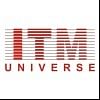





![Indian Institute of Technology, [IIT] Bombay](https://media.getmyuni.com/azure/college-image/small/indian-institute-of-technology-iit-bombay.jpg)

![Indian Institute of Technology, [IIT] Kanpur](https://media.getmyuni.com/azure/college-image/small/indian-institute-of-technology-iit-kanpur.jpg)
![Indian Institute of Technology, [IIT] Kharagpur](https://media.getmyuni.com/azure/college-image/small/indian-institute-of-technology-iit-kharagpur.jpg)






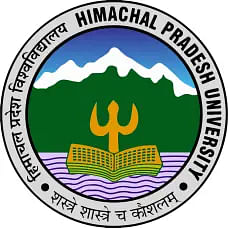








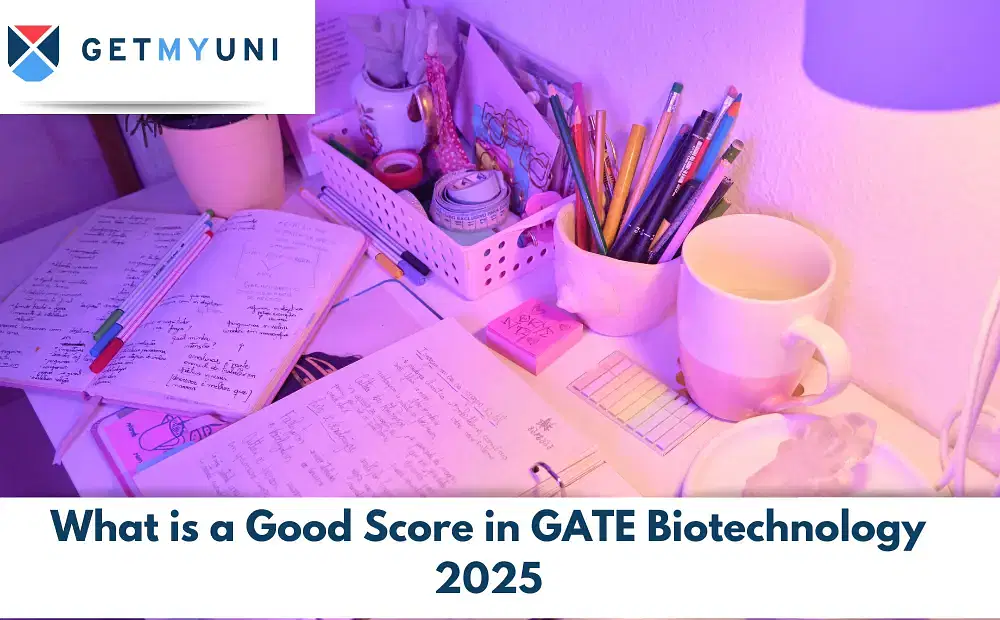






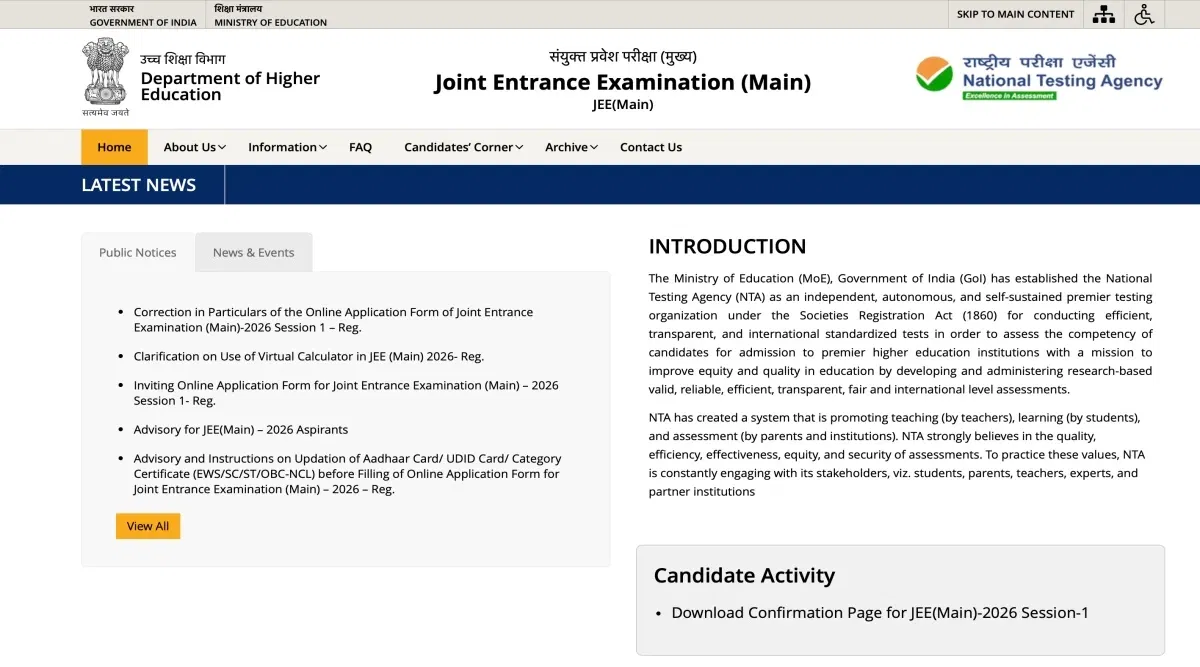



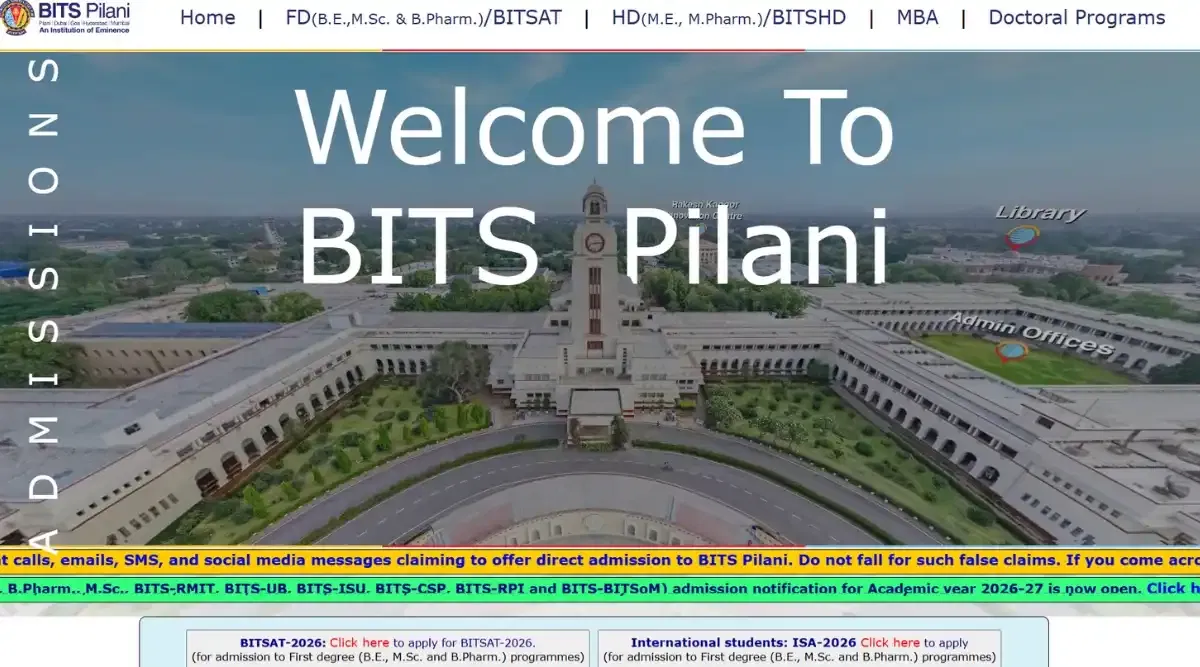


POST YOUR COMMENT